Taiwan-based Asus has
expanded its India footprint with the launch of
the new ZenFone smartphone series which is comprised of three models,
the
ZenFone 4,
ZenFone 5 and
ZenFone 6, which were first unveiled at CES
this year.
The sub-Rs. 10,000 is dominated by popular domestic
handset vendors such as Micromax, Karbonn, and Lava, but global brands
including Samsung and Motorola are starting to pay attention to the
entry-level segment too. The recently launched Micromax Unite 2 (Review | Pictures), Lava
Iris X1 and Moto E (Review | Pictures) even run KitKat, the most recent version of Android.
Asus
has priced its ZenFone series aggressively, and both the ZenFone 4 and
ZenFone 5 cost less than Rs. 10,000. The company has certainly created a
buzz in the market with its low prices, but it remains to be seen
whether this strategy will help set cash counters ringing.
We
received the ZenFone 5 ahead of its official launch date, and it definitely got our attention
with its good looks. We put the ZenFone 5 to the test to see if it can
take on the current top performers in the sub-Rs. 10,000 segment.
Look and feel
The
ZenFone 5 is a basic candybar phone with a basic yet modern style. It's
just as well built as Asus' other popular products such as the hybrid
tablet PadFone.
The first thing you will notice about the ZenFone5
is its boxy shape, which in a way gives it a high-end feel. In some
ways, it reminded us of the original HTC One - minus the metal casing
and dual front speakers.
The handset feels solid and sturdy.
It's 148.2mm tall and 72.8mm wide. Thanks to these generous proportions,
the thickness of 10.34mm doesn't feel too bad.
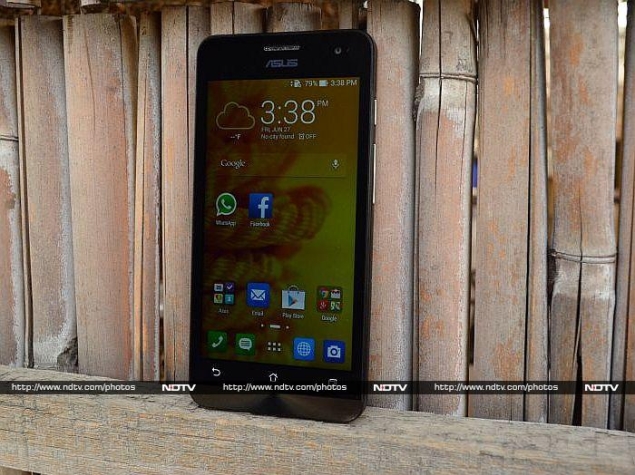
The ZenFone 5 is
available in five colours in India: Charcoal Black, Pearl White, Cherry
Red, Sky Blue, and Solar Yellow. We got our hands on the Charcoal Black
one and it looked very nice indeed.
As we wrote in our first
impressions of the Asus ZenFone 5, the phone's ergonomic design and good looks are
its best features.
The smartphone was easy to hold and use with a
single hand, at least for us. It was easy to reach most of the screen
with just the thumb; people with smaller hands might face some issues.
The
ZenFone 5's front is dominated by its 5-inch display with the section
below it sporting a concentric circle finish which matches the design of
Asus' ZenBook laptops. The 2-megapixel front-facing
camera, a notification LED and the sensor array are located above the
screen.
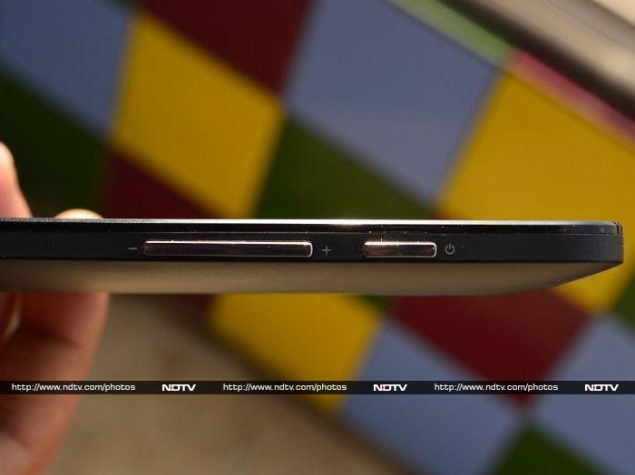
The metallic-looking volume and power buttons are all in a
line on the device's right edge and we had no problem hitting them. The
audio jack is placed on top, and the Micro-USB port is on the bottom.
The
rear is noticeably curved and features a soft-touch material allowing
the phone to sit comfortably in hand. This might look good, but it
actually means the camera lens is flush with the rear surface, which
means it could get scratched when the phone is left in a bag or on a
table. A simple plastic cover would fix this.
The 8-megapixel
camera and LED flash are centred on the rear panel with subtle Zenfone and
Intel Inside branding below. The panel pops off to reveal the two SIM
slots, non-removable battery, and a microSD card slot.
Features, specifications and software
Confirming
the ZenFone 5's place within the budget segment is a dual-core 1.6GHz
Intel Atom Z2560 processor with what Intel calls Hyper-Threading
technology, which allows each core to execute two instructions at a
time.
Asus also demonstrated another version of the Zenfone 5 at
this year's Computex show dubbed ZenFone 5 LTE, with a 1.2GHz Qualcomm Snapdragon 400 processor for integrated LTE
support. This version might be ready for launch by the end of the year,
so for now only the non-LTE 3G version is available.
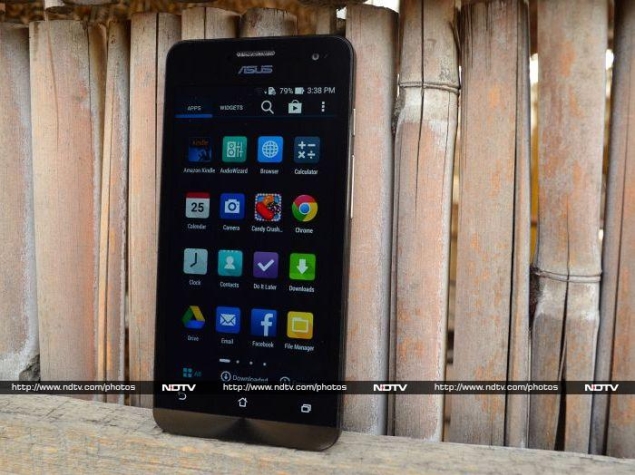
The ZenFone 5
comes with 2GB of RAM and will be sold with either 8GB or 16GB of
internal storage plus support for up to 64GB microSD cards. Connectivity
includes Wi-Fi b/g/n, GPS, and Bluetooth.
This is a dual-SIM
device (GSM+GSM) and supports two Micro-SIMs, both with 3G connectivity
though only one 3G connection can be active at a time. There is a
2,110mAh battery which is pretty good for a handset in this segment.
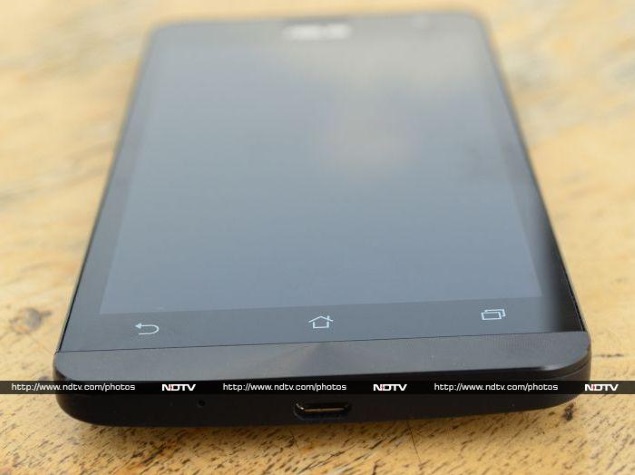
The
Zenfone 5 features a 5-inch IPS HD (720x1280-pixel) screen with Corning
Gorilla Glass 3 for protection. The screen's 294ppi pixel density makes text sharp and
clear, but is a letdown when compared to the likes of the Moto G (Review | Pictures) which boasts of
329pixels per inch.
(Also see: Asus Zenfone 5 vs. Motorola Moto G)
The ZenFone 5's screen is highly reflective and gets
washed out a bit in sunlight unless you really raise the brightness
level. Thankfully, viewing angles were never a problem.
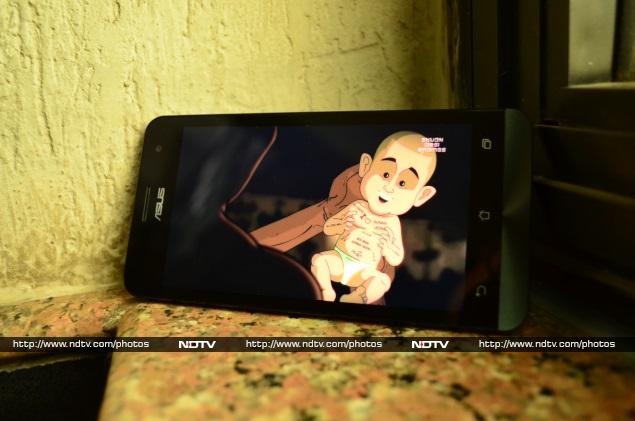
The
ZenFone 5 also comes with an app called Splendid that lets you control
the colour temperature, saturation and hue of the display. There is a
Reading mode for ebook lovers and Glove mode that increases touch
sensitivity so you can use the device while wearing gloves.
The
Asus ZenFone 5 has three capacitive navigation buttons - Back, Home and
Recents - below the screen, which is in contrast to the Moto G's virtual
keys.
The device runs Android 4.3 Jelly Bean with company's new
ZenUI skin on top. However, Asus has promised that an update to Android
4.4 KitKat is already on its to-do list.
The company has been
touting its ZenUI for some time now. Android users who have had a chance
to use the stock OS, will find the arrangement of features on the
ZenFone 5 a bit unsettling. Asus' skin applies to several elements of
the UI such as the app icons, although the changes are not as radical as
Gionee's Amigo UI or Samsung's TouchWiz UI.
The
Asus ZenUI allows you to customise onscreen elements, such as the
colour theme and level of transparency. The company has customised
nearly all stock apps on the handsets including the Gallery and Music
apps, adding more functionality. The Gallery app shows a timeline of
images and videos, as well as the ability to sync them to any cloud
service including the company's own Asus Webstorage. The default music
player offers option to tweak equalizer levels even during song
playback.
The ZenUI offers Chrome in addition to the default browser. The
default browser does not support Adobe Flash.
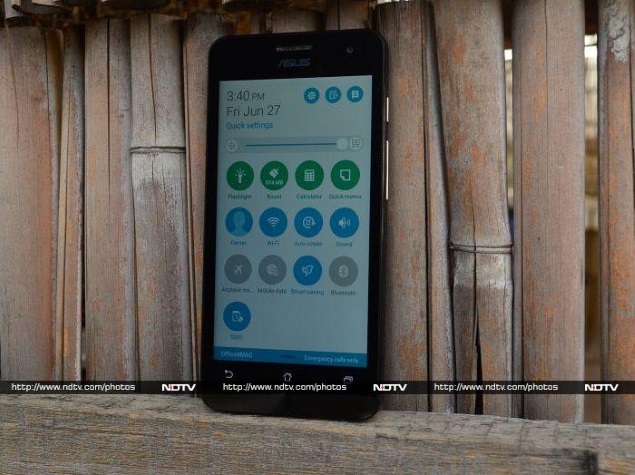
ZenFone 5's
notifications tray by default offers shortcuts to frequently used settings
including airplane mode, battery status, Wi-Fi, Bluetooth, GPS, data
usage, audio profiles, and brightness. You can reorder the shortcuts by
just tapping the edit button in the notification tray.
The phone
comes with a number of apps such as What's Next, which can track and
manage apps; Do It Later, a to-do list; Super Note, for taking notes;
Zen Link (Share Link, Party Link, PC Link, and Remote Link apps); Asus
WebStorage, the company's cloud storage app (all users get 5GB free for
life), and Omlet Chat, a free instant messaging app.
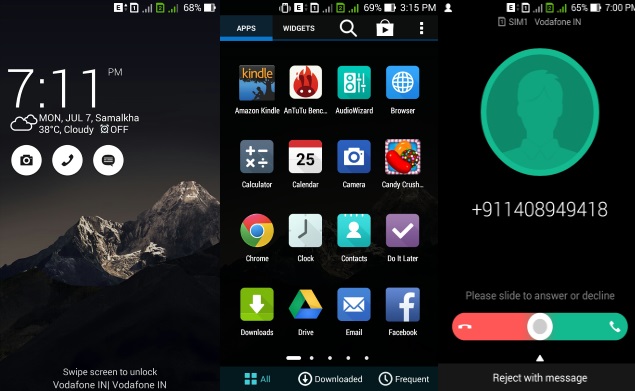
A Power Saver
app offers users three options: an ultra-saving mode that disconnects
the network connection when the device is asleep; optimised mode, which
doesn't switch off data, and a custom mode which can be tweaked by the
user.
In addition to these, the ZenFone 5 includes Google Drive,
Gmail, Hangouts, Google+, Google Search, Google Photos, the Play Store,
Google Play Music (Books, Games, and Movie), and YouTube. The handset
also comes preloaded with Amazon's Kindle appand the popular Candy
Crush.
Overall, Asus has tried to make its new ZenUI as rich as
possible. While most users would not have a problem with this, fans of
stock Android fans will be far from impressed.
Camera
The
ZenFone 5 sports an 8-megapixel autofocus rear camera with an f/2.0
aperture lens and LED flash. There is also a 2-megapixel front camera.
Asus also touts its ownPixelMaster technology which it claims combines
software, hardware and optical design to deliver improved image quality.
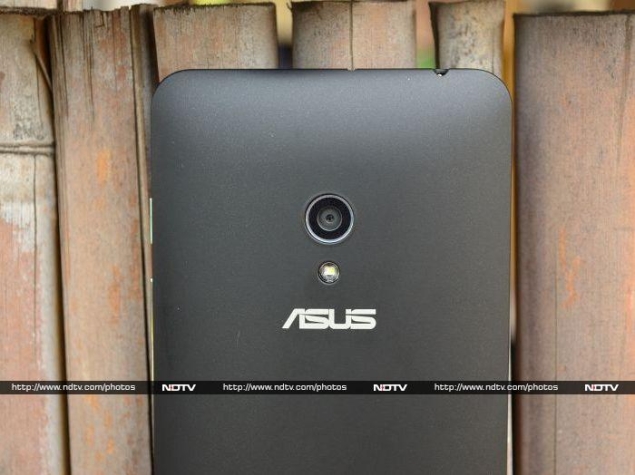
The
default camera app offers a few tools, most notably Time Rewind, which
starts buffering images and saves up to 31 images starting two seconds
before you actually press the shutter button.
The camera app
offers 18 modes - there's Auto, HDR,
Panorama, Night, Low-light, Selfie (detects faces within the frame
automatically), Miniature, Depth of Field (background blur), Smart
Remove (removes unwanted moving objects), All Smiles, Beautification
(helps adjusting the subject's look in real-time), Time Rewind, and GIF
animation (automatically converts a series of photos into a GIF).

The
ZenFone 5's camera app also offers settings for shutter, focus,
brightness, image size, ISO, white balance, colour effects, timer,
geo-tagging, shutter sound, and storage. Zoom can be adjusted by pinching
in and out, and the volume buttons also double as shutter keys when
you're in the app though there is an onscreen button as well.
We
tested the camera of the ZenFone 5 outdoors in well-lit conditions and
indoors in sufficient light. The photos we got were crisp and had good
amounts of detail. Low-light shots had far less detail though noise was
well under control. It also does a good job with videos and supports 1080p
video capture. The front 2-megapixel camera also takes decent pictures, and the Beautification mode helps.
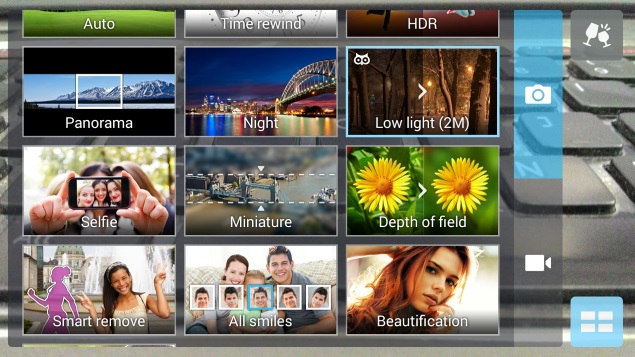
Overall,
the Asus ZenFone 5 features an excellent camera for the price, but don't expect it to
match the quality of more expensive phones, especially in low light.
Performance
In
terms of sheer speed, the ZenFone 5 is easily the best sub-Rs. 10,000
Android phone we have used. There was no lag, and multiple apps
including heavy games such as Asphalt 8 and Dead Trigger 2 were handled
with ease.
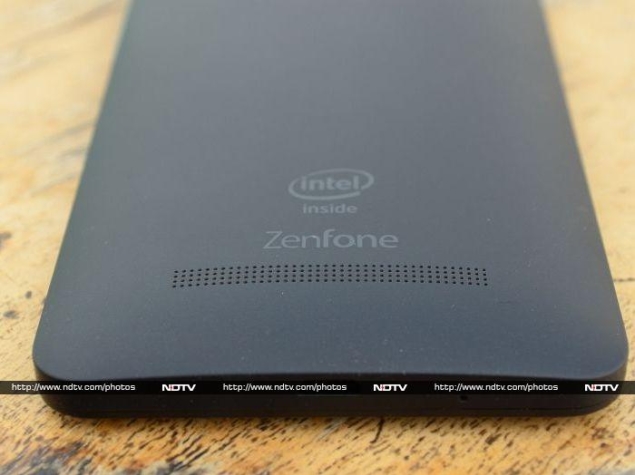
Heat from the rear panel was noticeable after long
gaming sessions, though not alarming. The handset also did heat up a bit
during prolonged data usage and calls.
Voice was loud and clear,
both in the earpiece and on speakerphone. On the multimedia front, the
ZenFone 5 is a decent performer. The 5-inch HD screen is good for movies
and videos. The ZenFone 5 was able to play full-HD videos and supported
popular video formats including avi, mov, mkv, and mp4.
The
Asus ZenFone 5 handled graphics and gaming with ease. We achieved scores
of 19,663 in AnTuTu, and 9,000 overall in Quadrant, which easily trumps
the Moto G which scored 11,874 and 8,569 respectively. 3DMark's 720p Ice
Storm Extreme scenario returned a score of 7638 points, while GFXBench
managed to run at 17.3fps. Looking at these benchmark scores the Zenfone
5 does not appear to be a budget device at all.
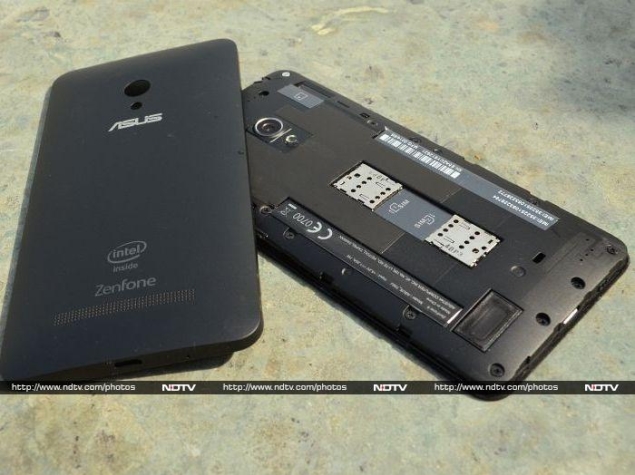
The battery was
able to able to last 6 hours and 40 minutes in our video loop test.We
were able to get about 8-9 hours of Web browsing and phone calls with
the usual notifications for messages, emails, Facebook, Twitter, BBM,
and WhatsApp, alongside some casual photography, with the screen
brightness turned all the way up and with 3G active the whole time. With
more moderate usage, we were able to make it last 10-11 hours.
Verdict
People
looking for a phone with a big screen can definitely consider the Asus
ZenFone 5, which is priced at an amazingly low Rs. 9,999. Its features
and performance give it an edge over most of the competition, not only
in the sub-Rs. 10,000 segment but also against many higher-priced phones
such as the Nokia Lumia 630 Dual SIM (Review | Pictures).
The Zenfone 5 is the first device to
truly offer competition to the Moto G. Thanks to its larger screen and
support for expandable storage, it could easily become more popular than a longtime favourite.
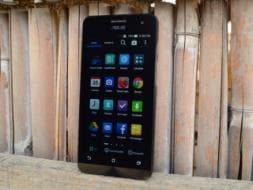
Asus ZenFone 5 in pictures  Asus Manufacturing Xbox-Branded Handheld That Combines Windows and Xbox Experiences: Report13 March 2025
Asus Manufacturing Xbox-Branded Handheld That Combines Windows and Xbox Experiences: Report13 March 2025 Asus TUF Gaming F16 With Intel Core 5 210H Processor, 16-Inch Display Launched in India12 March 2025
Asus TUF Gaming F16 With Intel Core 5 210H Processor, 16-Inch Display Launched in India12 March 2025 Asus Zenbook A14 Review: A Sleek and Lightweight Everyday Machine12 March 2025
Asus Zenbook A14 Review: A Sleek and Lightweight Everyday Machine12 March 2025 Asus VU Air Ionizer Series Monitors With Airborne Dust Reduction and 100Hz Refresh Rate Announced11 March 2025
Asus VU Air Ionizer Series Monitors With Airborne Dust Reduction and 100Hz Refresh Rate Announced11 March 2025 Asus Zenbook A14, Vivobook 16 With Snapdragon X Series CPUs Debut in India10 March 2025
Asus Zenbook A14, Vivobook 16 With Snapdragon X Series CPUs Debut in India10 March 2025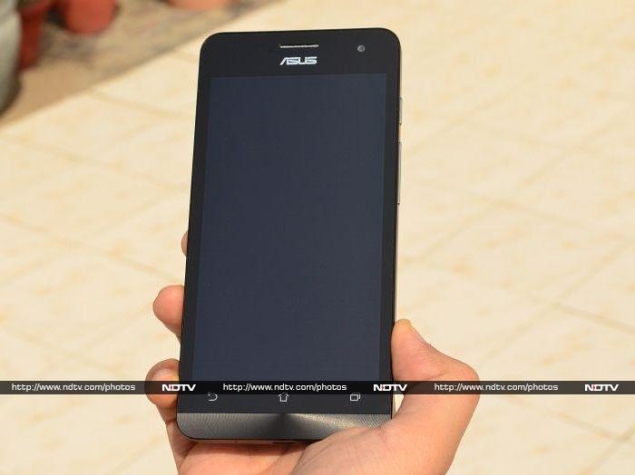




![Gadgets 360 With Technical Guruji: Ask TG [ March 22, 2025]](https://c.ndtvimg.com/2024-12/5s52e4k_-ask-tg_640x480_14_December_24.jpg?downsize=180:*)











